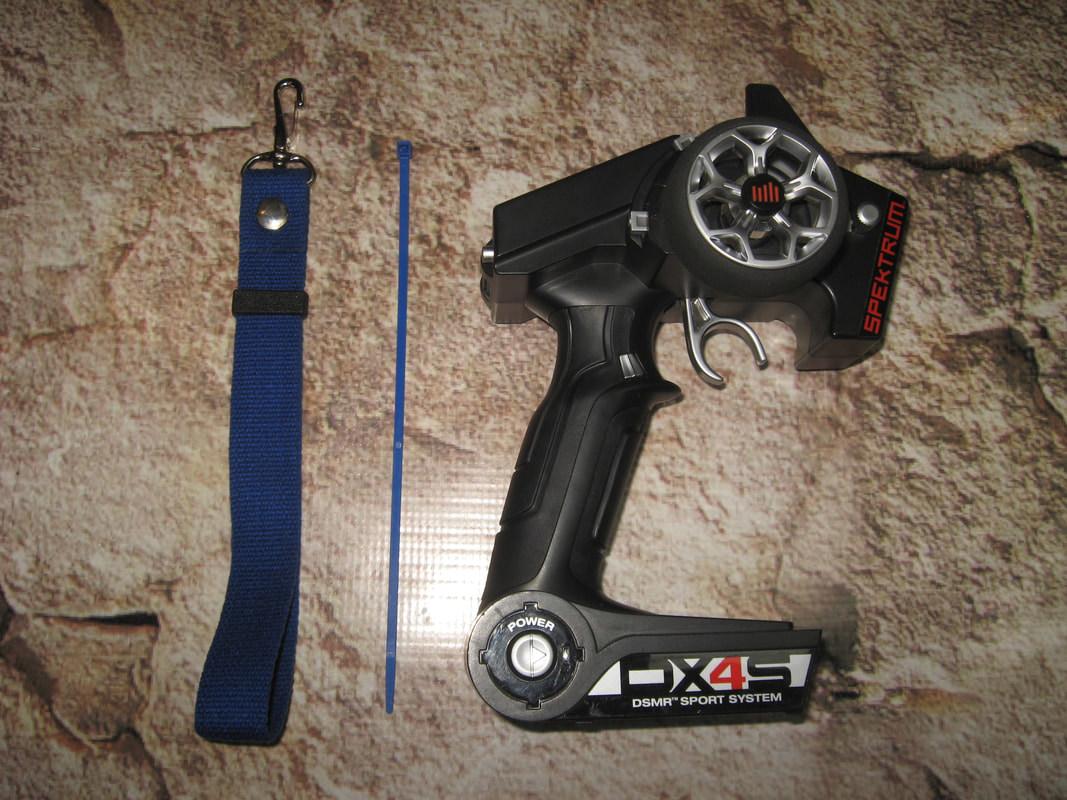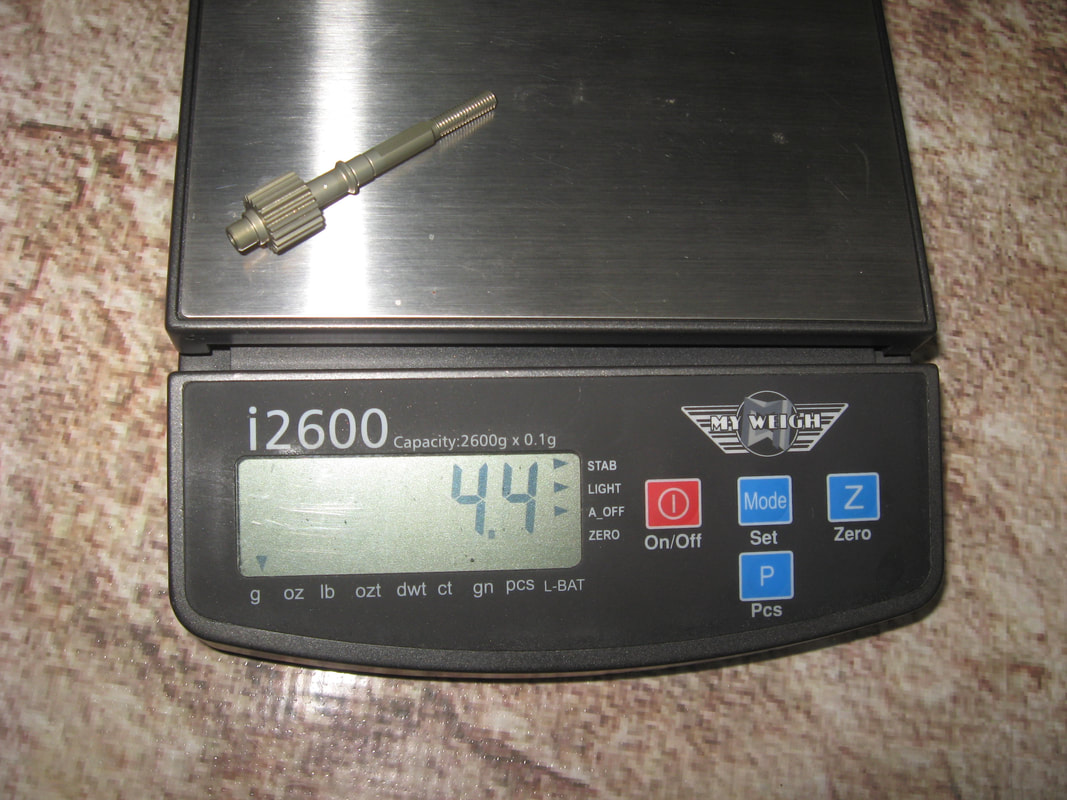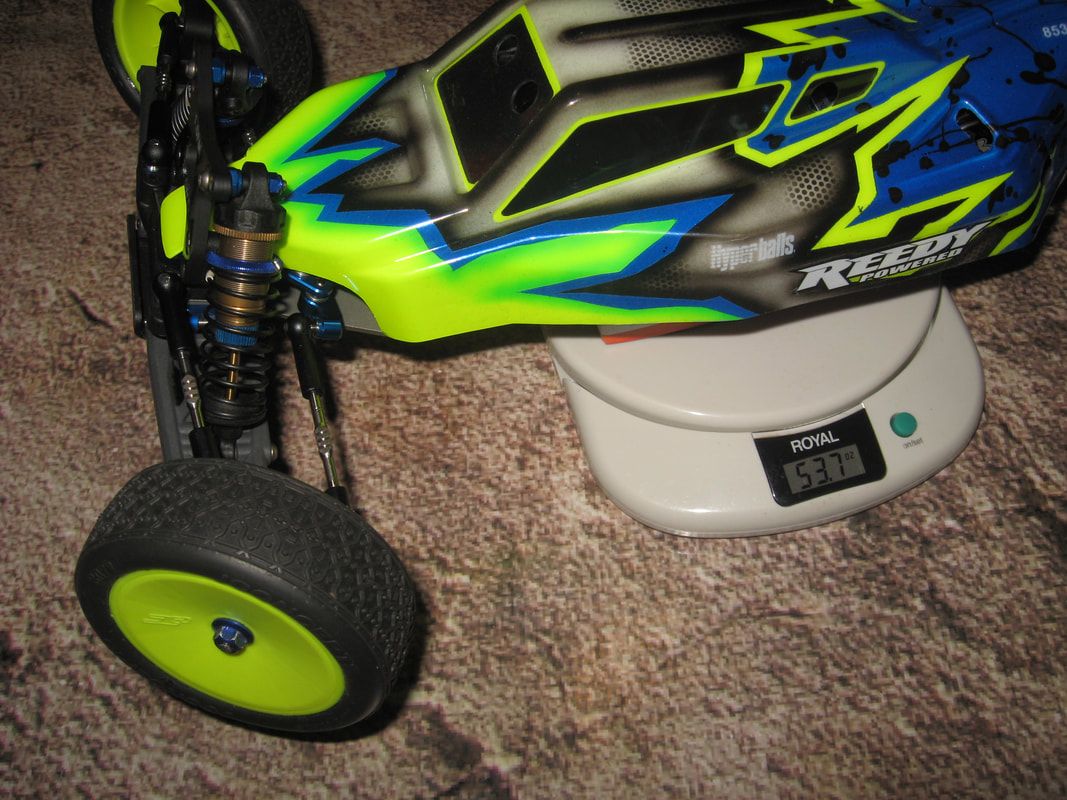Staying Centered We all know that RC races can become heated and distractions are constant. Sometimes the simple tricks to help you stay focused are the best. Here are two hacks I have learned that really help me focus on driving, and ignore the fellow screaming for the turn marshal. Above: I dislike the standard foam wheel for the simple fact that if my fingers slip during driving I have trouble finding the "centered" spot again. Yes, it does not take long to figure it out visually, but often seconds count for a win. Rubber wheel is by Kimbrough, and has been modified using three Team Associated aluminum button screws and one washer. The left and right screws help me find here my hand should naturally rest. The top (red washer) is more for looks, but shows center. Screws may need to be cut down slightly to fit. High Jump My real pet peeve with modern radios is they lack a wrist strap. How many times have you seen that high end radio tumble from the drivers stand, or go bouncing down the access stairs? At some point you will drop your radio, the only questions are how high will it bounce, and how many pieces will it be in when it lands? My fix was a common Airtronics wrist strap and a colored zip tie.
0 Comments
Every RC racer knows that reducing the weight of an RC vehicle will result in both increased speeds and longer run times, but do you really know what part is lighter? Start weighing individual stock and aftermarket parts, and it might surprise you. If just getting started, purchase a digital scale that weights in ounces (oz). These types of scales are great for weighting complete kits. For smaller parts you will need a scale weighting down to grams (g), and these can be more expensive, but are well worth the cost. Two common digital scales available online, or at most shipping supply stores. The scale on the right is for weighing heavier objects (oz), such as RC cars. The scale on the left is much finer in resolution (g), and can tell you what part is actually lighter. A large weight savings is apparent between these two transmission top shafts. Left is manufactured from aluminum (4.4g), the right steel (13.3g). Above, an Associated B6D, race ready, at 53.7 ounces, 1522 grams, or 3.35 pounds. In order to get an accurate reading, a small box was used as a stand to keep the tires from striking the ground. Scale was properly tared, or zeroed, with the box in place prior to the car being weighed. Useful information to compare to the rules prior to arriving at a race with a "skinny" illegal car. Scale TermsOunces: Unit of weight, 16 ounces equal 1 pound. Grams: Finer unit of weight, 1 gram equals 0.0352 ounce. Zero: Resets scale to zero. If a scale shows a weight value with nothing on it, it needs to be tared to zero prior to weighing an object. Tare: Subtracts an item you do not wish to weight, such as a car stand. Stabilization: Finer scales can be impacted by air movements. Scale should only be read when stable indictor is displayed. |
AuthorMichael Rogers Archives
July 2022
Categories |
The best way to search for the part you need is by the manufacturer's part number. If you do not know the part number, please visit our Archive Page, or use a common term like, "Losi XX shock tower."
All prices are in USD. Copyright © 2011-2024 Valkyrie RC Motorsports LLC. All rights reserved. All product names, logos, and brands are property of their respective owners. All wording and photos on this site are the property of Valkyrie RC Motorsports LLC, and may not be used without prior written consent..
BBB current rating is A+.
BBB current rating is A+.








 RSS Feed
RSS Feed

